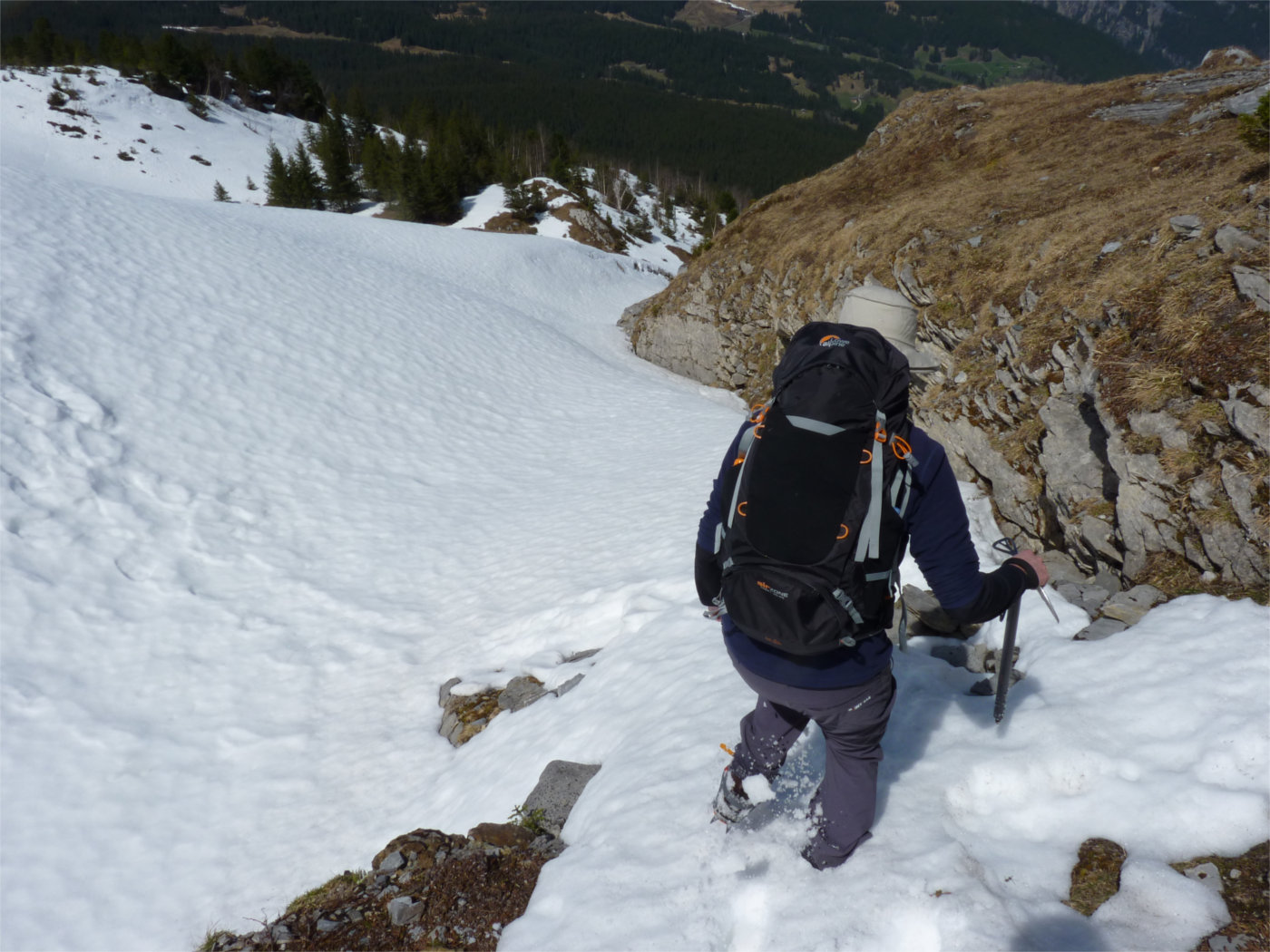I’m a walker and have been since I can remember. From tottering up the bottom section of the Watkin path on Snowdon at age two, to organising a three-day trek in Snowdonia at age fifteen, I have always felt at home exploring the mountains. By my early thirties I had walked extensively in Snowdonia as well completing hikes in the Lake District, Peak District and Scotland. I have a kind of obsession with Snowdon and have summited forty-two times by a number of different route combinations. Hiking and scrambling have always been my escape. When life gets tough, I run away to the mountains and am always renewed.

Then, last year, I got really ill. I was rapidly losing weight and became so weak that the most basic everyday activity became extremely difficult. I would drop things and regularly lost my balance when walking. My eyesight also began to deteriorate. There were other symptoms too, which I shall not go into detail here. I was in denial. For months, my situation worsened, but who wants to admit the fact that there may be something seriously wrong? I explained it away in my head. It must be work. I was a new teacher and extreme tiredness is par for the course in this profession. I eventually saw a doctor who, after testing my blood glucose level, told me I had to go to hospital immediately. That night I was diagnosed with Type 1 Diabetes and kept in overnight on an insulin drip. On release, my condition did not improve as expected and, to cut a long story short, I was diagnosed with Pernicious Anaemia, Hypothyroidism and Polycythaemia over the next few months. The latter three conditions are all easily treated with injections and prescription drugs, but Diabetes is a life-changer!
Diabetes management is a complex thing and can be overwhelming to start with. I wondered if I would ever be able to hike again. In Type 1 Diabetes the body is not able to produce its own insulin. Insulin is a hormone that basically transports glucose from your blood into your cells for energy. As the body is no longer able to regulate blood glucose levels, this must be done ‘manually’. This is the tricky bit. If blood glucose rises too high it results in hyperglycaemia, which if occurs too frequently over an extended period of time, leads to all sorts of scary complications such as blindness, kidney failure, heart failure, nervous system failure, basically ‘everything failure’. Low blood glucose, hypoglycaemia, if untreated, leads to diabetic coma and death. The difficulty in keeping blood glucose levels within an acceptable range is that there are so many factors that influence it. Generally speaking, carbohydrates raise blood glucose and insulin lowers it. Exercise is a big factor too and it was this that was the biggest concern for me. Exercise dramatically lowers blood glucose levels and can easily lead to hypoglycaemia.
Diabetes however would not beat me. Steve Redgrave, diagnosed with Type 2 Diabetes at age 35, said: “Diabetes has to live with me, not me live with it”. I took inspiration from this and from other professional sports people with the condition. Progress was slow. During my early recovery period, I would walk one mile in the field behind my home, slowly. I would work out how many Jelly Babies I needed to compensate for the energy expended. One Jelly Baby has five grams of carbohydrates and would allow me to walk for fifteen minutes without my blood glucose dropping too far. I wondered what people might think seeing a man out walking for exercise and replacing the calories expended immediately by eating sweets as he walked! In time, I extended my walk to two miles and switched the Jelly Babies for snacks with a lower glycaemic index (slower conversion from carbohydrates to glucose). I became more confident and the fear lessened the more I experimented.
Six months after diagnosis I decided to go big. Snowdon was waiting. But I needed to be careful. This was a big step (I’ve never been a very patient person). There was no chance I would be doing this on my own so I recruited my two brothers, both experienced hikers. I chose a route that neither of them had done before, ‘The Rollercoaster’. A 10-hour walk involving five peaks and a lot of up and down in between. As well as the usual map, waterproofs, spare fleece and water, my pack this time (and ever since) included a lot of carbohydrate snacks, glucose tablets and glucose test strips. Blood glucose levels were checked at least every hour and carbohydrates regularly eaten. On a few occasions, blood glucose dropped a bit low and glucose tablets were required but overall, the diabetes was managed and the trip was successful. I could even justify a very unhealthy feast in the summit café. Energy levels were good throughout and the future was now brighter.

Since diagnosis seventeen months ago, I have completed eighteen peaks in the UK and a winter hike on the lower slopes of the Eiger North Face. There are still challenges. My blood glucose monitor does not work in sub-zero temperatures during winter walks and diabetes changes during the early years, so treatment routines need to be adjusted. I continue to be inspired by others with the condition. In 2015 a guy named Jerry Gore, a type 1 diabetic in his fifties, made a speed ascent of the north face of the Eiger, still one of the most dangerous climbs around. Fortunately, I still have my escape. I can go to the mountains and with some additional care, can wander to my heart’s content.